Have you started learning the Japanese language recently? If yes, we congratulate you on your quest to learn this awesome language. However, it is important to realize that learning a new language is never an easy task as you will be introduced to lots of new concepts. Despite how tasking it can be to study Japanese or any other language, you can succeed if you have the right resources that are written to help beginners learn the basic elements.
Download JLPT N5 TEXT BOOK CHECK THIS LINK
In this article, we will review a few of the best beginner Japanese textbooks that can walk you through the journey of learning the Japanese language. These textbooks do not only have the required resources for beginners, but they can also make learning easy and fun-filled.
- Minna no Nihongo 1
- Genki I: An Integrated Course in Elementary Japanese (English and Japanese Edition)
- Japanese from Zero! 1: Proven Techniques to Learn Japanese for Students and Professionals
- Learning Japanese Hiragana and Katakana
- Japanese Hiragana & Katakana for Beginners: First Steps to Mastering the Japanese Writing System
With the information provided in this article, you now know the essential textbooks that you can use if you are new to the Japanese language. These books have been written in such a way that beginners can use them to start the journey to become a Japanese speaker.
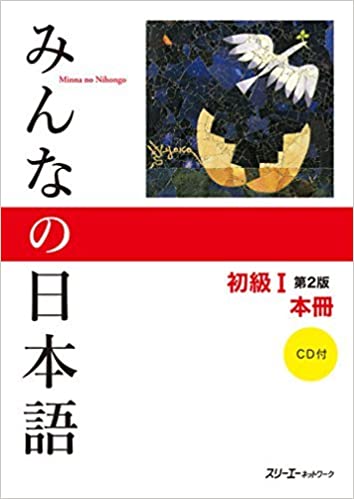
The first book on this list is Minna no Nihongo 1, which is undoubtedly one of the most famous books for individuals that are learning Japanese. This textbook introduces you to Japanese and shows you the basic things you need to start communicating in the language. It is the first book in the popular Minna no Nihongo series.
Published by Three A Network, Minna no Nihongo 1 is often recommended by the majority of Japanese language schools because of its relevance to beginners. This textbook focuses on helping new learners to study Japanese by using several exercises. However, the entirety of this textbook is in Japanese; hence, it may be difficult for you to understand it at the beginning. Don’t get worked up over this as you can just get translation and grammar notes in English; hence, you will be able to understand everything in the book regardless of the level of your understanding of Japanese.
The main features of Minna no Nihongo 1
- Suitable for beginners
Foremost, Minna no Nihongo 1 is entirely written in kana that is easy to be read by beginners. Therefore, if you have some understanding of kana, you will have no issue with using this textbook. Besides, you can get the English translation notes to make it easier for you.
- Well-structured units
The second important feature of Minna no Nihongo 1 is its detailed structure. Generally, this textbook has 25 units that comprise the essential things you need to kick-start your Japanese learning experiences. Each unit focuses on different areas of the fundamental subjects that you need as a beginner. The textbook takes advantage of several exercises to test your understanding of the language.
Also, you will come across tons of dialogues that introduce you to Japanese in life-like scenarios. These dialogues will also make you learn different vocabulary words that beginners need for effective and efficient communications in the Japanese language.
Similarly, this book has been written in such a way that you can complete it within 100 to 150 hours of study. All you have to do is to follow its study flow to grab the basic things you need to flourish in knowing Japanese.
- Additional CD
Since it can be difficult to learn a new language without listening to people speaking it, Minna no Nihongo 1 comes with a CD. So, just put this CD into a CD player and start hearing various dialogues in Japanese. Apart from enhancing your learning experience, this CD also makes it possible for you to learn Japanese without getting any assistance from a tutor.
- Answer key and numerous questions for revision
Based on the experience of many Japanese learners, questions play a key role in improving learning speed. Therefore, Minna no Nihongo 1 comprises numerous questions that you can use for revising what you have read. These questions will help you to refresh your memory of the Japanese language. Besides, if you are interested in taking JLPT or any other Japanese language exam, these questions can be quite useful as they will let you know whether you are set for those exams or not.
In addition to the questions, this book has an answer key. This answer key shows you the best way to answer each question in Minna no Nihongo 1. In addition, this can come in handy if you are writing any Japanese proficiency test.
2. Genki I: An Integrated Course in Elementary Japanese (English and Japanese Edition)
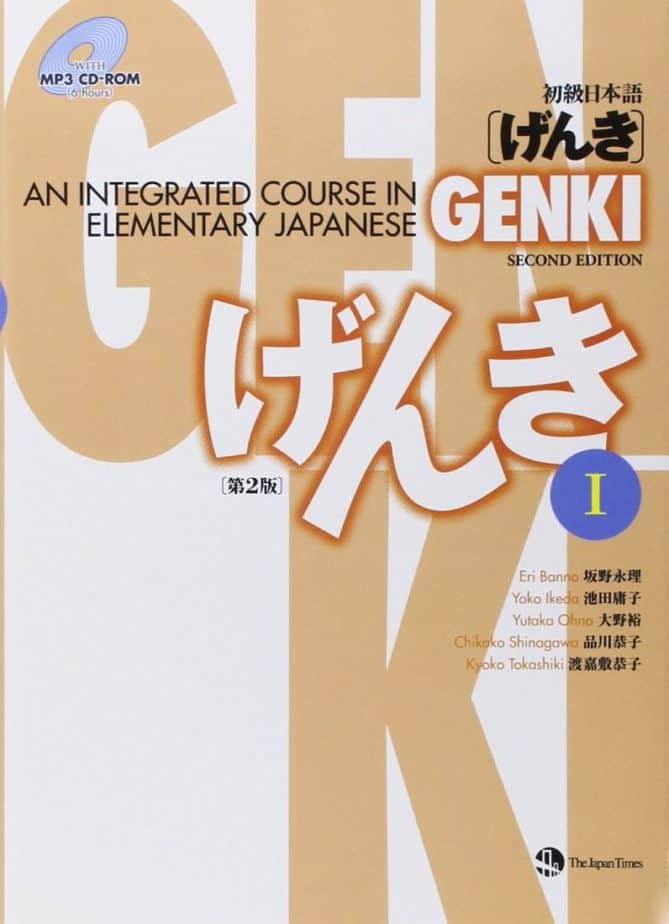
If you are learning the Japanese language in a language school, it is likely that you would have come across Genki I: An Integrated Course in Elementary Japanese before. This is because it is the most commonly used textbook for teaching Japanese as lots of people believe that it covers everything a beginner needs.
Genki I: An Integrated Course in Elementary Japanese touches all areas of the Japanese language such as speaking, writing, reading, and listening. A team of authors (Yutaka Ohno, Eri Banno, Chikako Shinagawa, and Yoko Sakane) works together to make it the one-stop book that all beginners can count on.
The main features of Genki I: An Integrated Course in Elementary Japanese
- Easy-to-understand and non-intimidating study flow
Let’s face it – Japanese can be intimidating to learn, especially for people that only understand languages like English. Hence, if the study flow looks difficult, you may lose interest in learning the language. Luckily, the authors of Genki I: An Integrated Course in Elementary Japanese understands this reality; hence, this book introduces you to Japanese via a non-intimidating method. Notably, this textbook has a total of 12 main lessons that teach you the foundational elements of Japanese. A few of the subjects that the book covers include time, seasons, greetings, shopping, and health.
Distributed by Tsai Fong Books, Inc., this textbook makes learning Japanese seems like an easy task so that you can have an interest in it. Furthermore, the structure of the lessons is usually predictable. You don’t have to think too deep before knowing what you can expect in the next lesson. This predictability makes learning fun, easy, and straightforward. It also gives you a sense of having some basic understanding of the language; hence, encouraging you to learn more.
- Supplementary yomikakihen section
Apart from the 12 main lessons of Genki I: An Integrated Course in Elementary Japanese, there are also 12 supplementary yomikakihen lessons. These lessons are designed to teach you how to read and write Japanese in line with the main lessons. With these supplementary lessons, you can begin to study hiragana, katakana, and kanji without much hassle.
- Lots of practice exercises
Like many other Japanese language textbooks, Genki I – An Integrated Course in Elementary Japanese has loads of practice exercises. These exercises assess your understanding of these things you have learned. Notably, each section of the book has several practice exercises.
- Loads of pictures
Without a doubt, pictures aid learning, and this is why most kids’ books have lots of pictures. Genki I: An Integrated Course in Elementary Japanese has numerous images that will make you visualize what you are studying. While the pictures may make the book look like a children’s book, it plays an essential role in making it easier for you to remember everything you have learned. Also, it makes learning Japanese fun and less intimidating regardless of your previous knowledge of the language.
- MP3 CD
As you study Japanese, it is equally vital to put a voice to the things you are learning. In view of this, Genki I: An Integrated Course in Elementary Japanese provides you with an MP3 CD which is important for listening comprehension. Since it is an MP3 media, you can get it on your smartphone or even tablet and continue learning the Japanese language anywhere you find yourself. Imagine how this MP3 can make your learning experience to be non-stop.
- Culture Notes
If you are getting the revised edition of Genki I: An Integrated Course in Elementary Japanese, it will have a new segment called Culture Notes. This section is mainly designed to assist you to learn about Japanese culture. It shows you etiquette and different scenarios that you may come across in Japan. This enables you to learn the language as well as the culture of the native speakers.
- Supplementary workbook
Apart from the exercises in the book, you can also buy the workbook written to boost how you study Japanese. This workbook contains numerous writing composition prompts, character sheets, fill-in-the-blanks, and translation practice.
3. Japanese from Zero! 1: Proven Techniques to Learn Japanese for Students and Professionals
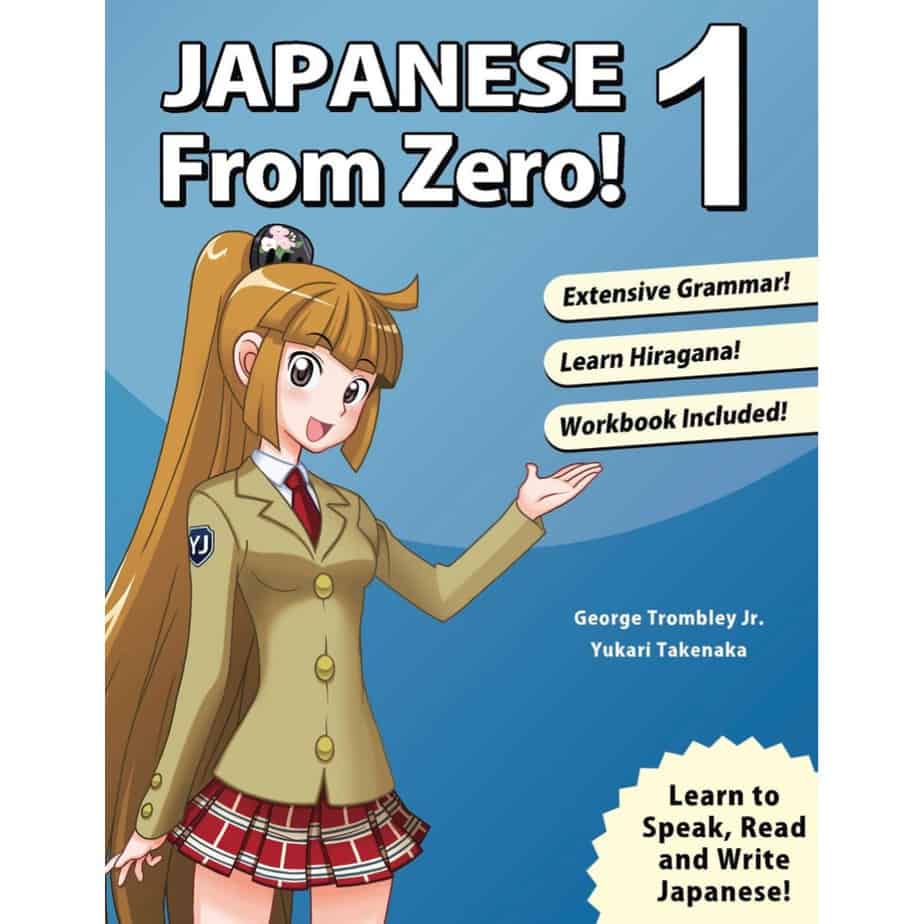
Are you entirely new to the Japanese language? Would you like to get a book that simplifies everything for you whether you are a student or a professional? If yes, don’t hesitate to get Japanese from Zero! 1: Proven Techniques to Learn Japanese for Students and Professionals. With this textbook, you will study reading, writing, speaking, and listening comprehension.
Written by George Trombley and Yukari Takenaka, this textbook uses a new, unique, and holistic approach to handle the way beginners learn Japanese. It is worthwhile to know that the experienced and professional authors of this book have used the techniques and lessons of the book for more than a decade with many students. Therefore, there is a certainty that these techniques and lessons can perform magic when it comes to teaching Japanese.
The main features of Japanese from Zero! 1: Proven Techniques to Learn Japanese for Students and Professionals
- More than 800 new words and expressions
When learning a new language, expanding your vocabulary is essential. Japanese from Zero! 1 will boost your vocabulary by giving you more than 800 new words and expressions. These new words and expressions have been particularly handpicked by experts to make sure they are commonly used by native speakers. Therefore, you will not only study new words, but you will also learn how you can use them to communicate seamlessly in Japanese.
- Introduction to the hiragana writing system
Hiragana is believed to be the most commonly used Japanese writing system. The other two popular writing scripts are katakana and kanji. Japanese from Zero! 1 will give you an overview of hiragana and also teach you how to read and write it. By the time you are done with this textbook, you should be able to write and read simple Japanese greetings, signboards, food menus in restaurants, etc.
- Integrated workbook with answer key
Some textbooks for learning Japanese have separate workbooks that you need to buy differently. However, Japanese from Zero! 1 makes life easier for learners as its workbook is integrated. Therefore, as you are buying the textbook, you will also get a workbook that you can use to evaluate what you have learned.
Also, the workbook has an answer key that shows you the best way to answer the questions. All these features come together to improve your learning experience significantly.
- Easy-to-understand example dialogues
Japanese from Zero! 1 has several sample dialogues. These dialogues will provide you with some scenarios and conversations between some individuals. The example dialogues available in this Japanese book are easy-to-understand for beginners. In addition, they describe realistic scenarios that every learner can relate to. All these factors make it easy for the students to remember the scenarios as well as the new words introduced.
- Culture points
This section is entirely dedicated to giving you useful lessons about Japan. This ensures you don’t only know the Japanese language, but you also learn about the culture of the native speakers. This can be instrumental in allowing you to learn etiquettes and other vital factors that can affect your communication skills in the newly learned language.
- Bilingual glossaries
In addition to all the features above, Japanese from Zero! 1 comprises of bilingual glossaries – both kana and romaji. The glossaries explain different terms in the book and aid your comprehension skills.
4. Learning Japanese Hiragana and Katakana
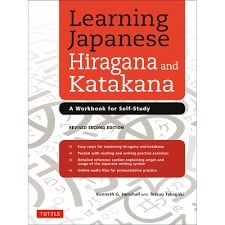
Hiragana and katakana are two of the three commonly used Japanese writing systems. These two systems are collectively called kana. Without these two systems, it will be impossible for you to write or read anything in Japanese. Kanji is the third writing system, but you cannot even use it without having a great understanding of hiragana and katakana. So, if you want to study these two Japanese writing systems, Learning Japanese Hiragana and Katakana is the book you need.
This detailed and systematic Japanese workbook is good for individuals that want to learn Japanese on their own, but it is also commonly used in classroom settings. Since this book is for beginners, it features the foundational hiragana and katakana phonetic symbols you need to start writing simple words in Japanese.
The main features of Learning Japanese Hiragana and Katakana
- A basic introduction to the Japanese kana system
Learning Japanese Hiragana and Katakana introduces the basic hiragana and katakana phonetic systems to you. By the time you read the whole book, you would have learned the primary function, pronunciation, origin, and usage of 92 hiragana and katakana phonetic characters. The book will also teach you how you can combine different characters. You will also be equipped with the variations of these characters and how you can write them without missing out on any stroke order.
- Practice spaces
This workbook offers lots of spaces for practice, self-test, and review. These practice spaces come in different stages as you will find some after a topic, section, etc. Hence, you can always assess what you have learned and how much of them you can still remember vividly. The new edition of the book even comes with more reading and writing exercises that will test your understanding of Japanese.
- Unlimited access to online audio files
To aid your ability to pronounce the hiragana and katakana phonetic symbols correctly, you will be provided a link to online audio files. Wherever and whenever you want, you can just go online and access these files for the right pronunciation of the various vocabulary words, characters, and sentences in Learning Japanese Hiragana and Katakana.
- Useful and culturally relevant vocabulary
As you are using Learning Japanese Hiragana and Katakana to study the major Japanese writing systems, you will also be shown some vocabulary words. It is important to note that these words have been specifically selected because of their usefulness and cultural relevance. So, you can rest assured that the vocabulary will be useful in your day-to-day communication with Japanese speakers.
- Helpful extra information with romanized Japanese
If you are one of the learners that are already used to romanized Japanese, Learning Japanese Hiragana and Katakana can be quite important for you. This is because it has lots of additional information that you can use to learn different aspects of Japanese. This feature is a major difference between Learning Japanese Hiragana and Katakana and many other books for beginners.
5. Japanese Hiragana & Katakana for Beginners: First Steps to Mastering the Japanese Writing System

Like many other languages, there are some basic things you need to learn to be able to write in the Japanese language. Japanese Hiragana & Katakana for Beginners: First Steps to Mastering the Japanese Writing System promises to show you the introductory elements for studying hiragana and katakana, the two most important Japanese writing systems. The publisher of this textbook also offers Japanese Kanji for Beginners which teaches kanji, the remaining important Japanese writing system.
Japanese Hiragana & Katakana for Beginners: First Steps to Mastering the Japanese Writing System takes a different but holistic approach towards teaching students how to write hiragana and katakana. Nonetheless, this innovative approach has been used for several learners in Japan, the USA, and other countries, and the results are immensely encouraging.
The main features of Japanese Hiragana & Katakana for Beginners
- Comprehensive mnemonic-basic approach
Japanese Hiragana & Katakana for Beginners: First Steps to Mastering the Japanese Writing System takes advantage of a mnemonic-based approach to show students the most essential 92 characters they need to learn to start writing and reading Japanese. As you are learning the Japanese characters of these writing systems, the method will be allowing you to relate their sounds and shapes with some images. In addition, you will be associating the new characters with some common English words that you already know. With this method, anyone can learn Japanese as long as they are ready to put in the required effort.
- Lots of exercises
To provide learners with different opportunities to practice, write, read, and use the hiragana and katakana characters in the book, you will come across several interesting exercises. These exercises will play an important role in making it easy for you to remember everything you have studied in Although Japanese Hiragana & Katakana for Beginners: First Steps to Mastering the Japanese Writing System.
- Additional opportunities for improving your knowledge
Apart from the regular exercises in Japanese Hiragana & Katakana: First Steps to Mastering the Japanese Writing System for Beginners, this textbook also has lots of other methods for testing your understanding of Japanese. These methods include fill-in-the-blanks, word searches, timed recognition quizzes, crossword puzzles, and lots more. With these methods, you will find an engaging way to evaluate what you have read.
- The CD-ROM
Generally, Japanese Hiragana & Katakana for Beginners: First Steps to Mastering the Japanese Writing System is more concerned about equipping you with how to write and read in Japanese. However, this book also comes with a CD-ROM that can be used to print out flashcards. These flashcards contain all the same mnemonic images that you are found in the textbook. Therefore, by using these flashcards, you can continue reviewing and practicing hiragana and katakana phonetic characters wherever you are.
While some of these books have English translations or romaji, others are completely written in Japanese. Therefore, before selecting any of these beginner Japanese textbooks, you should take a second look at their main features to decide whether they are suitable for your particular need or not.
Best of luck as you start learning Japanese!
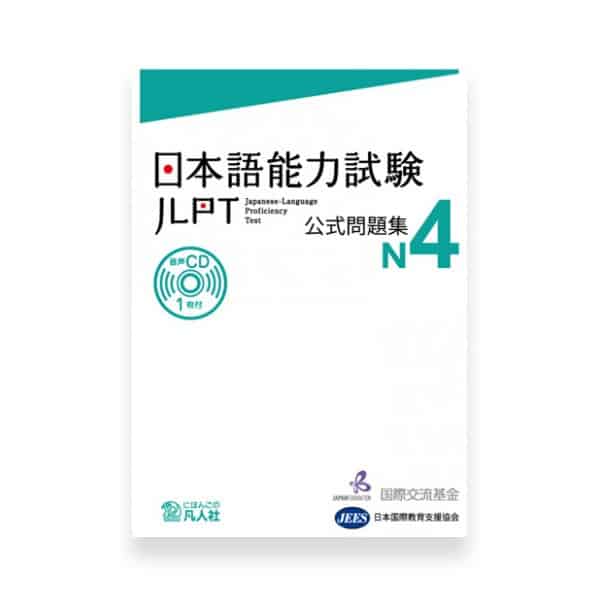
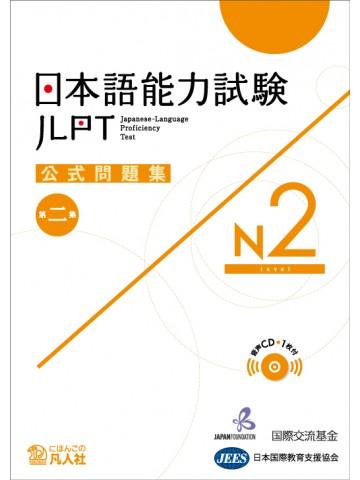


85 thoughts on “What’s the best Japanese self learning textbook for beginners”
Comments are closed.